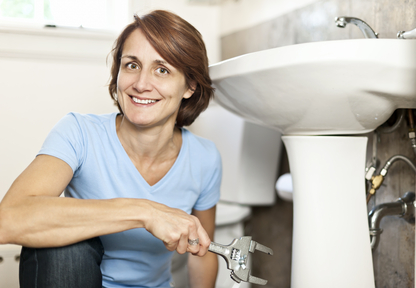Looking for Indicators of Water Damage in the Bathroom
Looking for Indicators of Water Damage in the Bathroom
Blog Article
Are you on the lookout for advise about How to Prevent Bathroom Water Damage?

The bathroom is extremely vulnerable for wet buildup and also possible water damages due to the frequent use water in it. This write-up supplies straightforward assessment methods to assist discovering water damage hazards.
The frequent use water in the washroom makes it very at risk for damp build-up and potential water damages. By evaluating it on a regular basis, you can decrease water related problems.
The adhering to set of evaluations is very easy to do and need to be done as soon as in every three months in order to keep your washroom healthy as well as to prevent possible water problems caused by the bathtub, the shower, pipeline joints as well as plumbing, sinks, cabinets, as well as the toilet
Do not forget doing these evaluations and also be complete while doing them. Keep in mind that these basic evaluations can save you a great deal of money by giving early signs for water damage
Sinks and also Cabinets
Sinks as well as cabinets are revealed to wetness and also humidity daily as well as are frequently neglected. Inspect on a regular basis under the sink and on the kitchen counter above it. Fix any type of drip in the catch as it might suggest drainpipe issues. Look around the sink, sluggish draining pipelines may indicate a blocked drain. Change sink seals if they are cracked or loosened.
Bathtub as well as Shower
The shower as well as bathtub need special focus as well as maintenance. Examine the ceramic tiles and also replace if fractured. See to it that there is no missing out on grout between the floor tiles. Examine and change broken caulking at joints where the walls meet the flooring or the bathtub. Blocked drains and pipelines troubles will certainly avoid the bath tub from drying and might indicate severe troubles below the bathtub. Seek advice from an expert immediately to avoid structural damages. Pay attention to stainings or soft areas around the tub wall surfaces as they might indicate an inner leak.
Plumbing
Signs for water damages are tough to detect considering that a lot of pipelines are installed inside the walls.
Pay unique focus to flooring as well as wall surfaces dampness and also stains as they may suggest an unseen plumbing trouble. Examine dampness levels in adjoining rooms also.
The Bathroom
The commode is a vulnerable water junction. Check the water lines and search for leaks around the bathroom seat, in the pipe, as well as under the water storage tank. If you find any kind of indicators of moisture on the floor around the toilet, check for leaks in the toilet rim as well as storage tank seals.
Know that hanging bathroom dish antiperspirants enhances the possibilities for blockages.
How to Prevent Water Damage in Your Bathroom?
Water damage repair is an expensive, meticulous, and lengthy process. Unfortunately, bathrooms are the most susceptible rooms to water damage due to toilets, showers, and sinks. Pipes and fixtures wear out over time and are not immune to damage. But all is not lost, as there are ways to prevent water damage from occurring in your bathroom.
Check Your Plumbing
Nothing lasts forever, especially pipes, which can rust and begin leaking over time. You should periodically conduct pipe inspections and pay attention for any musty smells or water stains that may indicate you need water damage repair. Here are some things to check:
Frequently test valves for your toilet, shower, and sink to ensure they are properly working. Check faucet supply lines hidden under vanities and replace when needed. Replace cracked or deteriorating caulking along sinks, tubs, and showers. If you notice a clog in your sink, call in a professional. Since you can’t check the pipes in the wall, keep an eye out for stains, drywall bubbling, musty smells, and excess moisture; if the bathroom is on a second level, check the ceiling of the room directly below for these signs. Don’t Overwork Your Toilet
One of the most common reasons bathrooms need water damage repair is due to overflowing toilets. Save yourself the hassle of cleanup by being mindful and not pushing your toilet to extreme limits. If you have young children, it is especially important to keep an eye on them when they are in the bathroom and to teach them how to avoid clogging the toilet. Here are some more tips to help prevent your toilet from overflowing:
If you have a septic tank, only use septic-safe toilet paper Do not flush anything down the toilet besides toilet paper; items like diapers and sanitary napkins will clog the piping Pay attention to your toilet’s water level: If it’s low, it could mean it is partially clogged or that there is a crack in the toilet bowl Maintain Your Shower/Tub
Replace showers or tubs with cracks or other damage; even hairline cracks can allow water to seep in and cause damage. Grout and caulk help prevent water from seeping into walls and floors, so repair them if they are chipped, cracked, or deteriorating. Replace torn shower curtains or shower doors with seals that no longer work. Dry the floor and drain water from the tub immediately after use to prevent damage from sitting water. https://www.alure.com/home-improvements-blog/resources/how-to-prevent-water-damage-in-your-bathroom

We hope you liked our piece on How to Prevent Bathroom Water Damage. Thanks a lot for taking a few minutes to browse our piece of content. In case you appreciated our post plz be sure to share it. Many thanks for your time. Come back soon.
Instant Quote Report this page